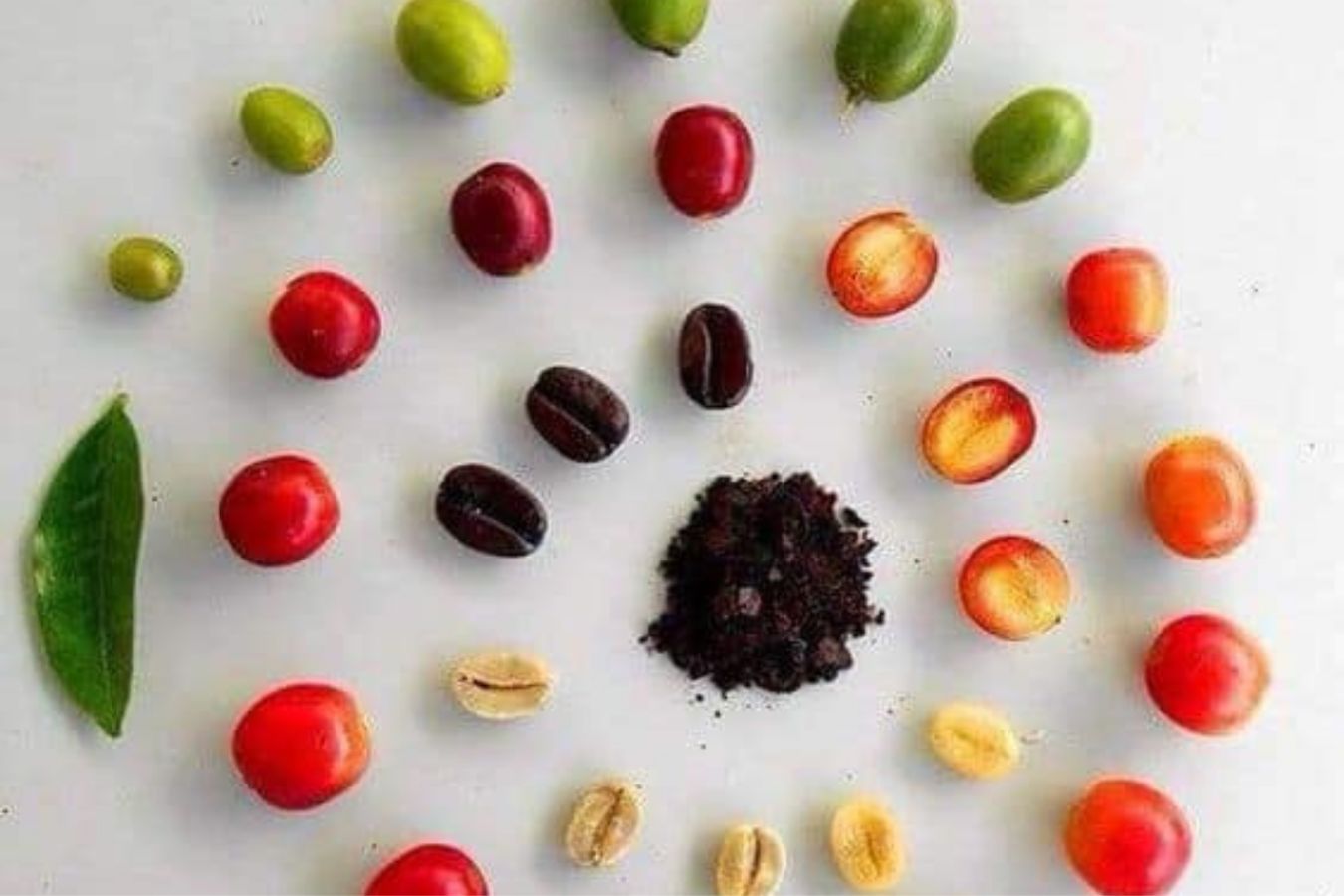
Coffee pulp hulls
To better understand the preliminary processing and roasting of coffee, it is necessary first to know the structure of the coffee cherries. The coffee fruit development consists of the fruit skin, the fruit pulp, the mucilage layer, the husk layer, the silk skin, and the causal layer. It can be divided into two main parts:

- Skin: Including the rind, the flesh
- Seed: Consists of husk, silk, and kernel (containing endosperm and Embryo)
The skin consists of 2 layers.
Outer skin: The fruit skin is formed by a layer of small parenchymal cells (primary cells containing chloroplasts capable of absorbing water). The color of the pods at the beginning of formation is green due to the presence of chloroplasts, which then disappear as the development of coffee fruits ripen.
The color at maturity depends on the coffee variety, but red or yellow is the most common. The red skin color (Robusta Coffee) comes from anthocyanin pigments, while the yellow color is attributed to luteolin (Bourbon coffee).

Mucilage: In unripe coffee cherries, these are the hard tissues attached to the rind, and as the fruit matures, pectolytic enzymes break down the pectic chains to form sugar and pectin compounds that give a soft, succulent structure that can Because of its high viscosity, it is often called mucilage.

In wet processing, this mucilage is removed through controlled fermentation. Meanwhile, with the dry processing technique, the mucus and the outer shell are preserved during the drying process.
The seed part, Consists of 2 shells + a kernel
Parchment
Parchment: is the outermost layer of the seed, in direct contact with the rind; the parchment is formed from three to seven layers of scleroderma (fibrous cells play a significant role in plants), also known as rice husk.
The cells constituting the husk will harden during the maturation of the coffee fruit, thereby limiting the final size of the coffee bean; in Arabica coffee, the average husk weight with a moisture content of approx. 11% is within 3.8% of the total weight of the coffee fruit (Wilbaux, 1961, as cited in Borém, 2008).
Silverskin
Silverskin: The silk shell formed from nucellus is silvery-white after drying, also called a silver shell. This shell is fragile and can be removed from the kernel during polishing.

However, some green coffee bean processors often leave silk on the beans as a natural protective layer, self-destructing during the roasting process. The silk skin may be darker in some regions, depending on the coffee variety.
Coffee filling
Coffee filling: The innermost and most crucial part of the fruit, responsible for accumulating nutrients for embryo germination. A regular fruit development coffee has two kernels (especially 1 or 3 cores).
The chemical composition of the kernel is essential as it is considered the precursor to the later flavors and aromas in roasted coffee. Chemical compounds found in the endosperm include:
- Water-soluble compounds such as caffeine, trigonelline, nicotinic acid (niacin), at least 18 chlorogenic acids, carbohydrates components (mono-, di- and oligosaccharides), some proteins, minerals, and carboxylic acids…
- Meanwhile, water-insoluble components include cellulose, polysaccharides, lignin, and hemicellulose, as well as some proteins, minerals, and lipids (Borem, 2008).
The coffee bean layer will be the Embryo, which includes an embryonic shaft (hypocotyl) and two cotyledons 3-4 mm long (Wintgens, 2009). The embryonic pole stretches and pushes the source above the ground when the seed begins germinating. The initial cotyledons are underground, and soon after, new cotyledons will form.
The above are fundamental concepts to help you understand why wet processing is necessary for higher quality coffee beans cells than dry processing products —physical and chemical changes when roasting coffee or the knowledge of coffee extraction later.
